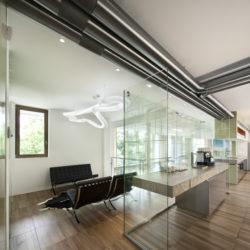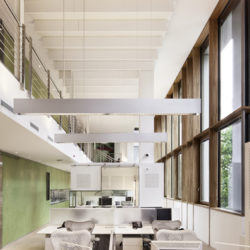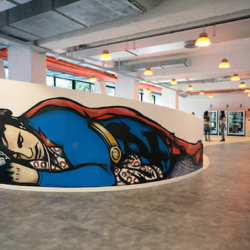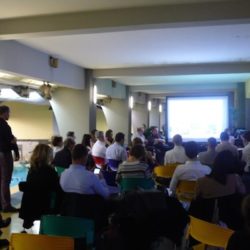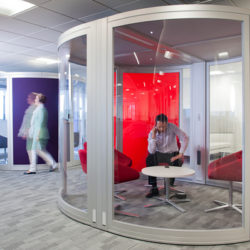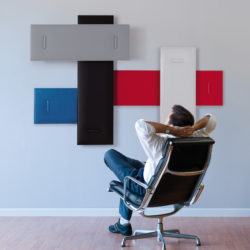
A working environment must be based on trust, sense of community and a communal growing process: the case studies we have analysed during the Jelly Session “Ergonomics, comfort and he alt promotion in the smart office” at the WOW! Agile Working Island 2016 suggested us a rulebook that we have called the Decalogue for the ergonomics of the new WOWs. A framework that we have developed with all the expert that took part of the meeting, suggesting a new idea of ergonomics and comfort for the spaces of the new ways of working.
1. Anthropologic Design.
Referring to design, the adjective “anthropologic” can be used with different meanings. Fist the different relationship between the company and the workers, we have discussed in the article “From a controlling father-like to a mother-like model of the company”. Then a working environment that is designed to answer to the need of the men living in, in a new connection between people and the office space. Finally it wants to stress the cultural meaning and context of the design, an instrument that reflects the mentality of the society and of the company.
2. Mental ergonomics.
Ergonomics is not just a correct position of the body, it is also a correct position of the mind, it is a productive and fertile state of mind, that goes far beyond the quality of the seat or the use of the adjustable height desks. The main feature of the smart working is a personal sensation of wellbeing: therefore ergonomics is also working, laying in a park, in a concept that take the working environment outside the border of the office building.
3. A new humanism.
This state of mind means giving a new status to the working activity, in an idea of a proactive, reasoning and satisfy person. The “worker as a human being” is the key concept of the new ways of working, following the paradigm happiness = more productivity and stronger ties between the employee and the company and its values.
4. Ergonomics of the soul.
Though it is similar to the previous two, this concept goes deeper. Ergonomics of the soul means to go beyond the idea of ergonomics as a mere scienze, made of charts and scientific studies, but to see it as an attitude of modelling the need of the company on the the need of the worker, a work-life balance capable of creating the less interference as possible between private and working life.
5. Flexibility of the workspace.
The workspace must be able to answer to all the need that a worker have to deal with during a working day. Flexibility, therefore, it is not just about furniture or design of the space, but about all the elements of the working environment, even the vertical partition (the most static one). The movable walls are part of a space designed for the smart working, a smart wall that that helps to enhance acoustic quality and the possibility of re-arrangement of the settings, and at the same time, it can be used as a interactive instrument or a screen.
6. Human to Human.
From B2B to H2H: when technology seems to get us apart from the working environment, the company and the worker can be linked in another way. Recalling a common expression as “Business to Business”, we can define the nowadays HR management and the workspace design as Human to Human.
7. The enemy is the distraction.
A special attention must be paid on the concept of concentration and how to avoid the lack of it, immediately at the first stage of the project, imaging specific paths and focusing on the acoustics. This is one of the main concerns of the new open space, a factor that has a strong influence over the wellbeing and the productivity of the employees. Absorption and soundproof materials: from more performing headphones, to textile floors, to the attention paid to the material and the disposition of the walls, to the use of soundproof panels. The possibility of find the right concentration is a very important issue for the new dynamic workspace.
8. Ergonomics of the Sight.
Beauty, home-feeling, comfortable: these words have now become part of the common language of the office design. The working environment must be a place where the worker likes to spend his day, not anymore a strict, severe, colourless space.
9. Fertility
Employees’ wellness means productivity. An increment that is not just about incomes and profit, but also about more creativity, innovation, new ideas, and better ways to find new solutions to problems the company have to deal with. The office become a fertile and fruitful space, making the company and the individual grow together.
10. Technological collision.
Technology is it not an optional element, but a fundamental feature that has to be take into consideration when an office is projected. It is not something you add to the space, but something that has to be thought with the space, in order to enhance his benefits and qualities. The internet of thing, also, increase the potentiality and the flexibility of the furniture, turning them into interactive and multifunctional objects.
Text by Gabriele Masi.
Ringraziamo tutti i partecipanti alla Jelly Session che hanno dato il proprio contributo per la stesura di questo Decalogo, tra i quali:
Daniele Andriolo (Plantronics)
Matteo Artusi (TotalTool)
Antonino Borgese (GPTW)
Renzo Caimi ( Caimi Brevetti)
Lella Castelli (Sedus)
Giulio Ceppi (TotalTool)
Cristiana Cutrona (Revalue)
Paolo Davoglio (Facility &Welfare manager)
Michele Dell’Orto (Linak)
Rossella Destefani (Deamicis Architetti)
Gianluca Geroli (SgS Architetti Associati)
Antonella Mantica (Progetto CMR)
Luca Pasqualotto (Copernico)
Marco Predari (Assufficio)
Federico Rivera (Digital Entity)
Renata Sias (WOW! Webmagazine)
Andrè Straja (GaS Studio)
Marco Vigo (DC10)
Silvano Zanuso (Technogym)
Antonio Zulianello (NEC)


